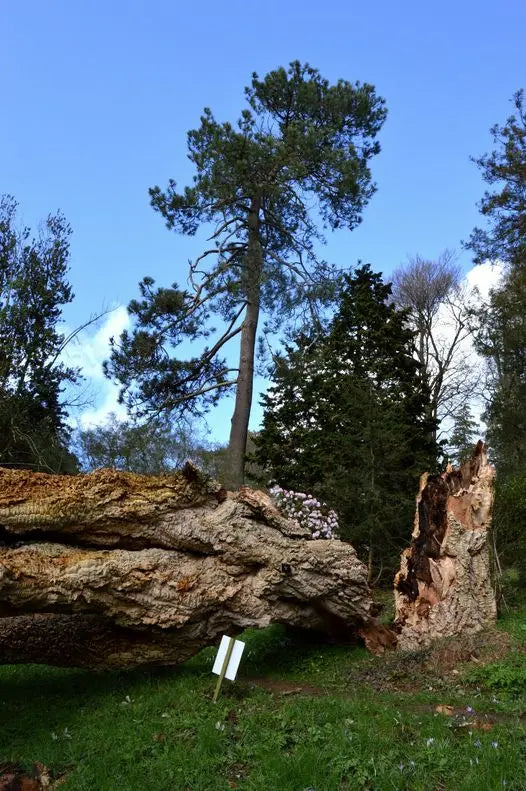
Amazing Cork Oak from National trust Killerton
Killerton House Cork oak
This amazing old tree that grew in the garden at Killerton House, came down in storms a couple of years ago. I now a have a large chunk of the tree cut and drying to give it a new life as a pen.

It was a pleasant surprise when I cut it in half, to find it spalted throughout. As you can see from the cut block it is going to make some great looking pens.
As the name suggests the bark of the Cork oak is indeed used to make corks.
The practice of removing bark from Cork Oaks dates back to ancient times: Theophrastus in his Enquiry into Plants (c. 350 BC – c. 287 BC), mentions that this species is exceptional in that it does not die when the bark is stripped off, and is in fact all the stronger for it. It takes considerable time for a Cork Oak to produce quality cork. The trunk has to reach about 23 cm dbh before its bark can be removed for the first time, usually at an age of 25 years. The first harvest produces cork of irregular structure, known as virgin cork, that can only be used for industrial applications (flooring, insulation, etc.). A second harvest nine years later produces cork of better quality but still not good enough for wine stoppers; it is known as secondary cork. Only the third and subsequent harvests produce what is called reproduction cork, of regular structure and smooth surfaces, which can be used for quality wine corks. The trees will be harvested every nine years for around a century and a half, yielding about 15 bark harvests in their lifetime. (www.treesandshurbsonline.org)
It may be a while before the wood is dry enough to turn but as soon as I can the pens will be on sale in the National trust shop at Killerton.
